St. Louis Public Library (Central Library)
Introduction
Text-to-speech Audio
Constructed from 1909 to 1912 at the site of the former St. Louis Exposition and Music Hall, this grand library has served as the central location for the St. Louis Public Library system for over a century. It was originally designed by one of the foremost architects of the day, Cass Gilbert, who designed many other prominent buildings throughout the country, such as the U.S. Supreme Court Building in Washington D.C. and the Woolworth Building in New York City. In 2010, the St. Louis Public Library system temporarily closed its Central Library for a major renovation project, which was completed in 2012. State-of-the-art technology, a new research room for local history and genealogy, rare books collections, an expanded children's section, and an accessible entrance facing Lucas Park were among the renovations. Docent-led architectural tours are offered on site at Central Library, one of the most recognizable landmarks in the city.
Images
The Central Branch of the St. Louis Public Library was built in 1912.

Chandeliers and rounded arch windows illuminate the Library's Great Hall
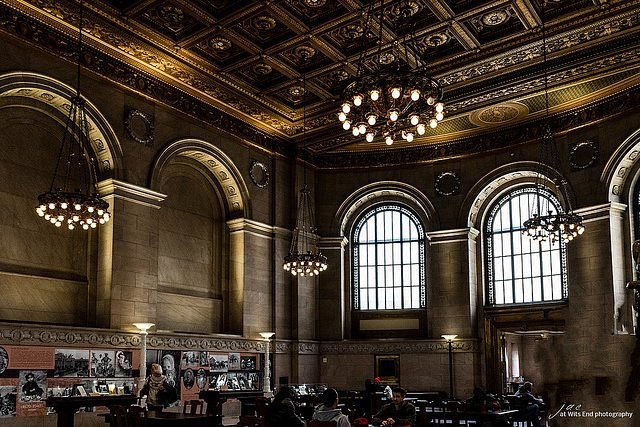
Architectural details include a coffered ceiling
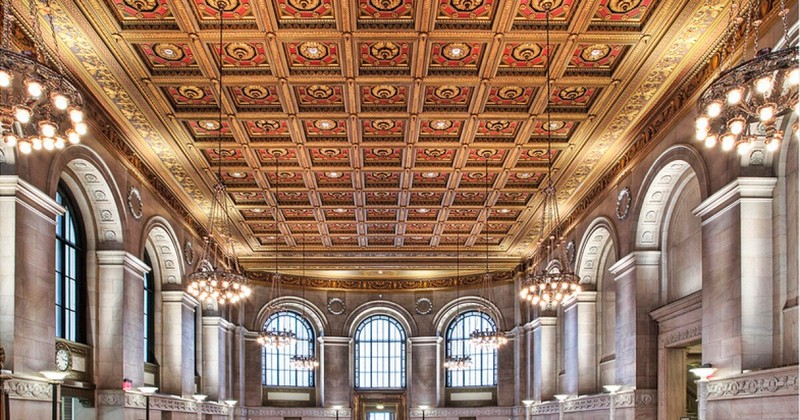
The Fantasy Maps exhibit was on display at the library in 2016.
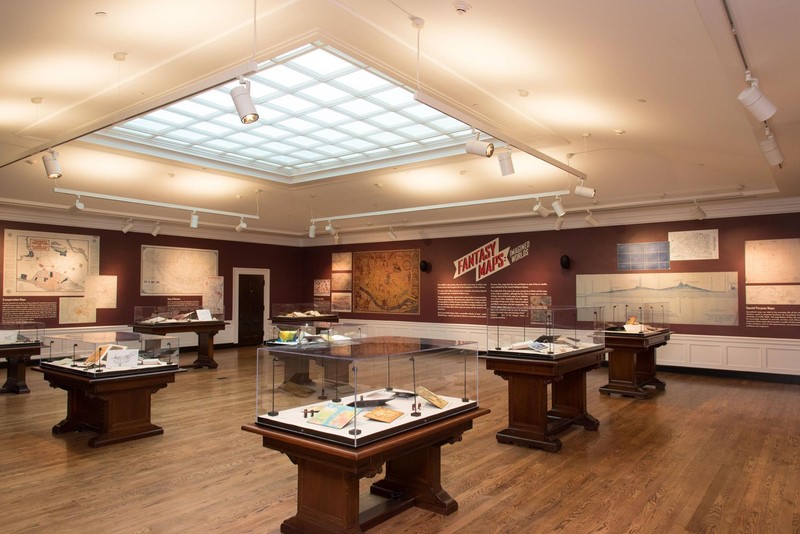
The Fantasy Maps exhibit included "walkable maps" (shown here).
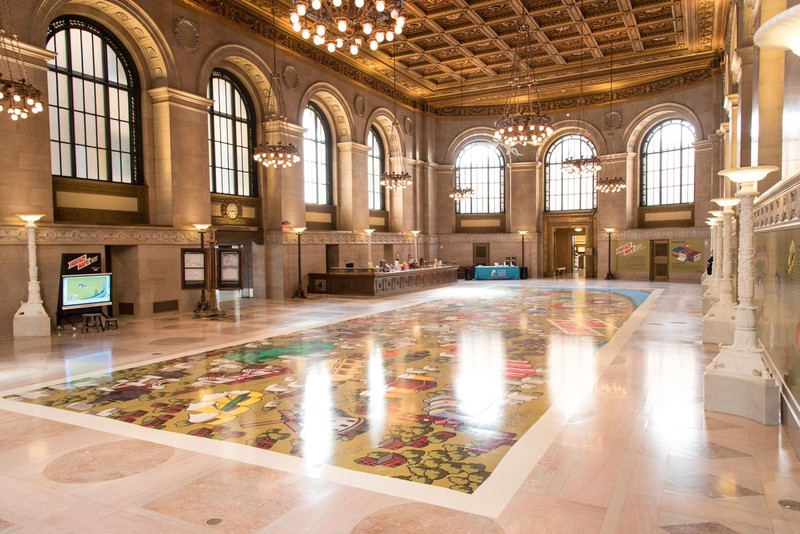
In 2022, Fodor's named the St. Louis Public Library, Central Branch, one of the most beautiful libraries in the U.S.
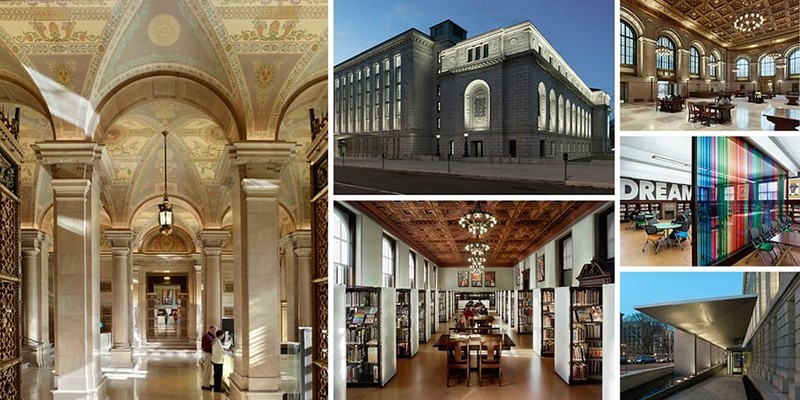
Philanthropist Andrew Carnegie's 1901 letter promising one million dollars to fund a new Central Library in St. Louis
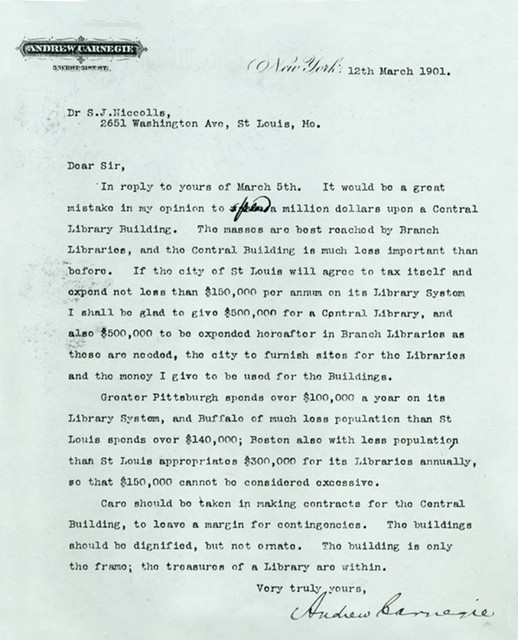
The Library was designed by the architect Gilbert Cass, who also designed the Woolworth Tower in New York City and the U.S. Supreme Court Building in Washington D.C.
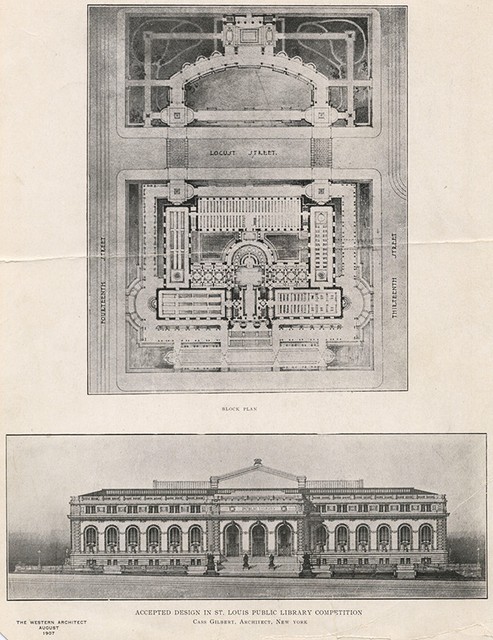
Some of the original architectural blueprints for the Library were six feet wide, conveying the massive scale of the building.

The architectural blueprints were mounted on linen fabric and could be considered works of art in their own right.
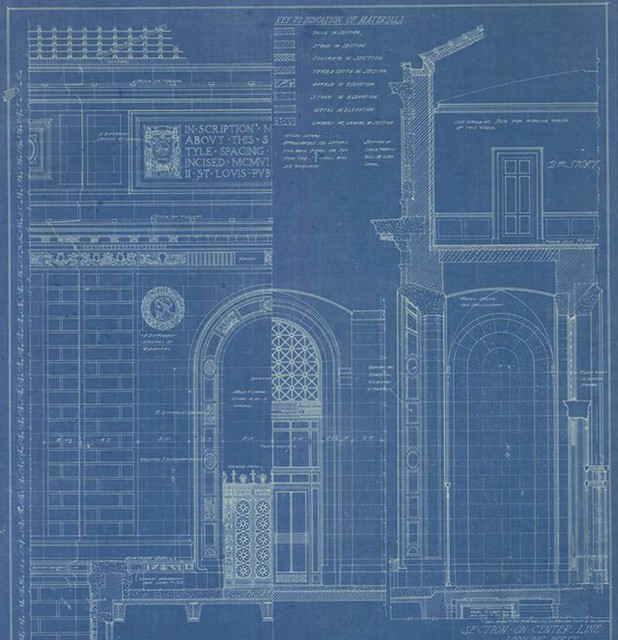
The St. Louis Exposition and Music Hall (shown here in 1892) was fully demolished to make way for the construction of the Library.
.jpg)
After the Exposition and Music Hall was demolished, construction of the new Library began in 1909. A massive foundation was needed to support not only the new building but also the weight of the books that would be kept inside.
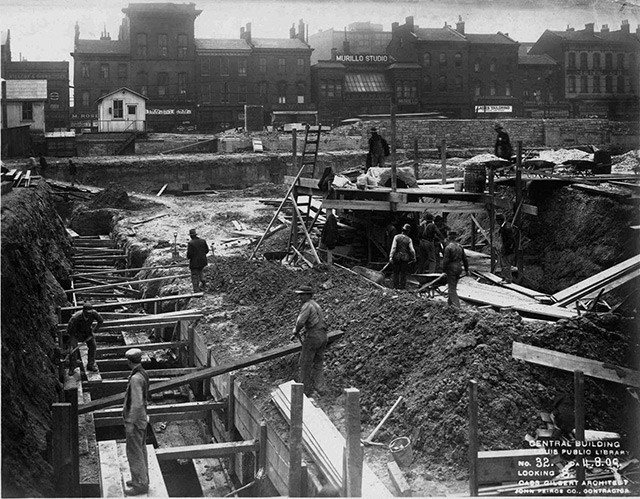
Workmen arrived with a team of mules and some materials were transported on the animals' backs. (1910)
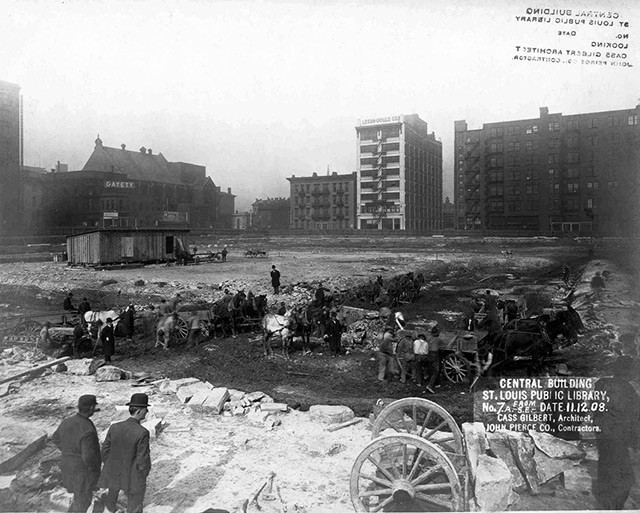
The Library's steel frame was erected in 1909.
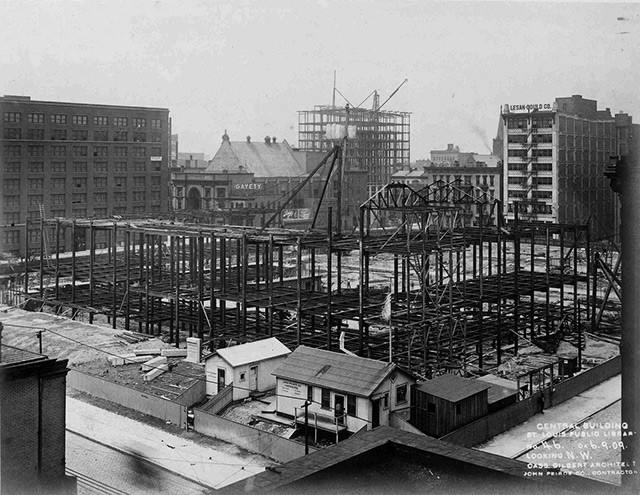
The exterior walls were built with granite from Mt. Waldo, Maine (1910).
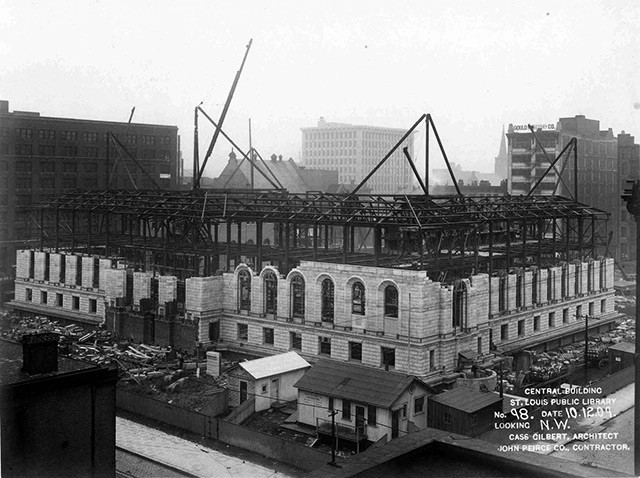
The Periodicals Room (shown here under construction in 1910) later became the Library's section for Business, Law, & Government books.
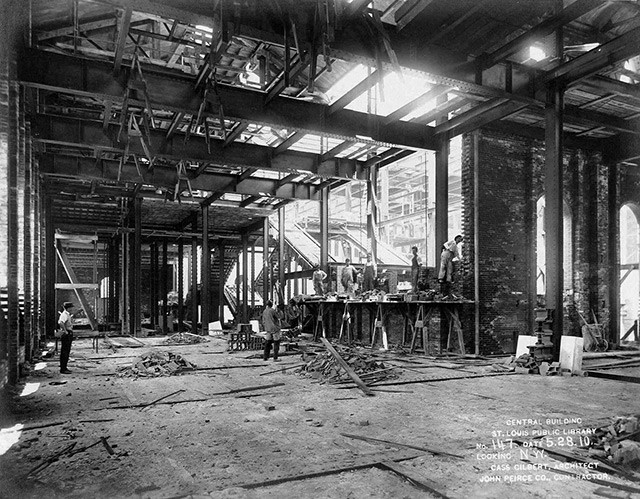
Interior staircases were added in 1910.
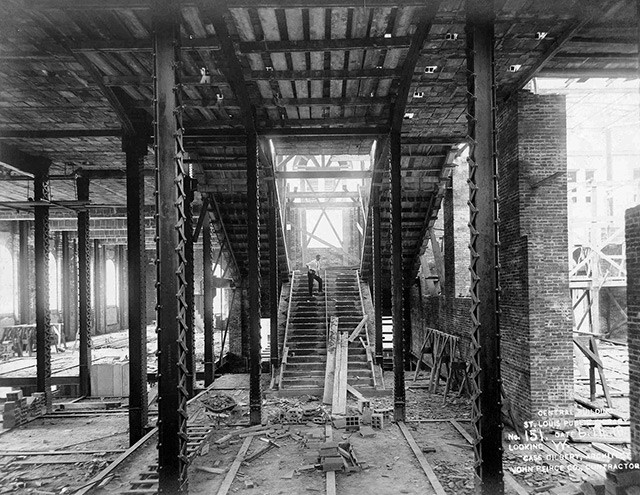
Marble was installed on the walls of the Great Hall. Note the shadowy figures in the foreground (image, left side); these workers who could not keep still long enough to be photographed
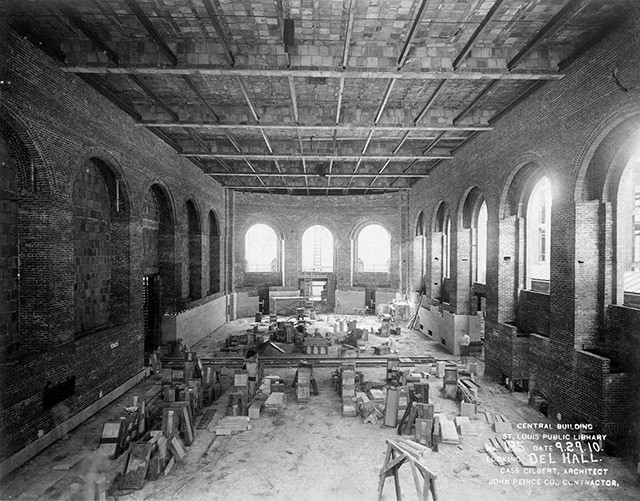
The plaster added to the ceiling of the Periodicals Room was based on Michelangelo's design for the Laurentian Library in Florence. Windows covered to keep workers and plaster warm during installation in Nov. 1910.
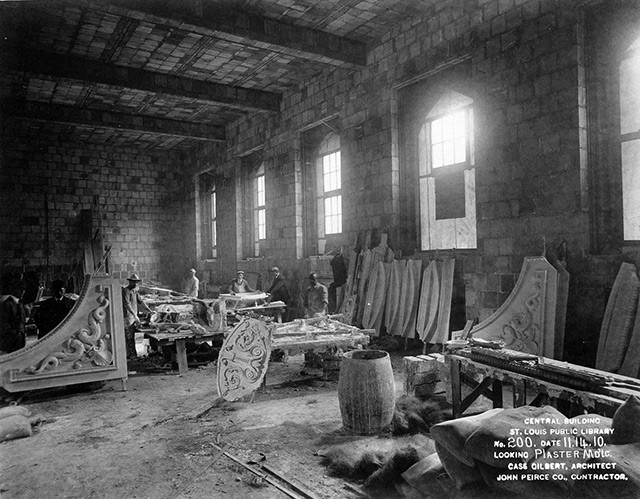
In 1912, the new Central Library was finally complete.

The Library opened to the public, quickly becoming one of the most recognizable landmarks in the city.
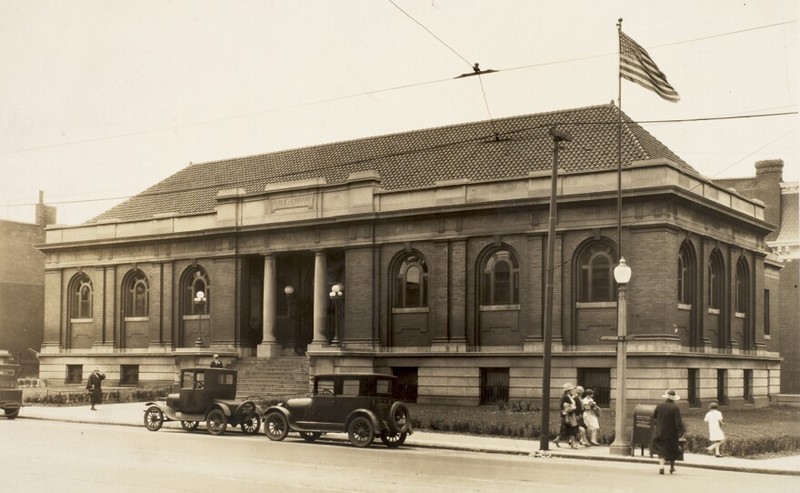
A century after the Library was built, it underwent renovations from 2010 to 2012, updating the building for the 21st century
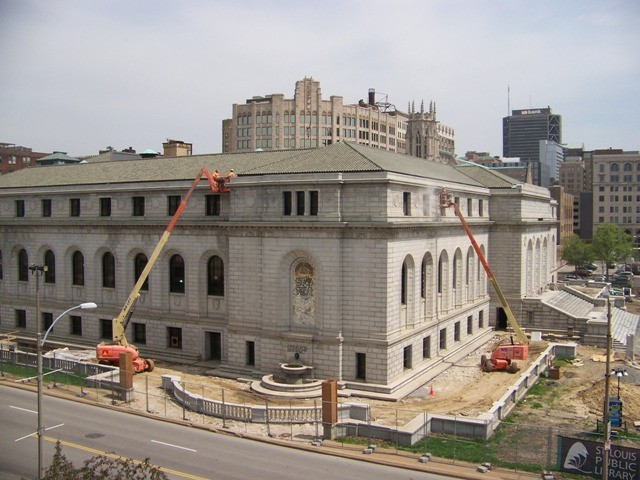
New steel beams were carefully transported in April 2011.
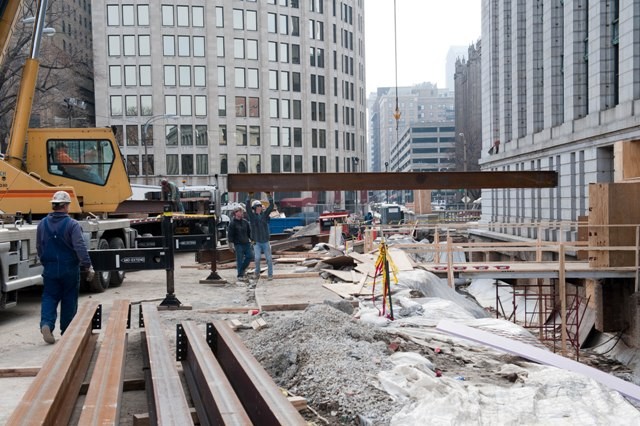
Canon Design was hired to modernize the Library for the 21st century.
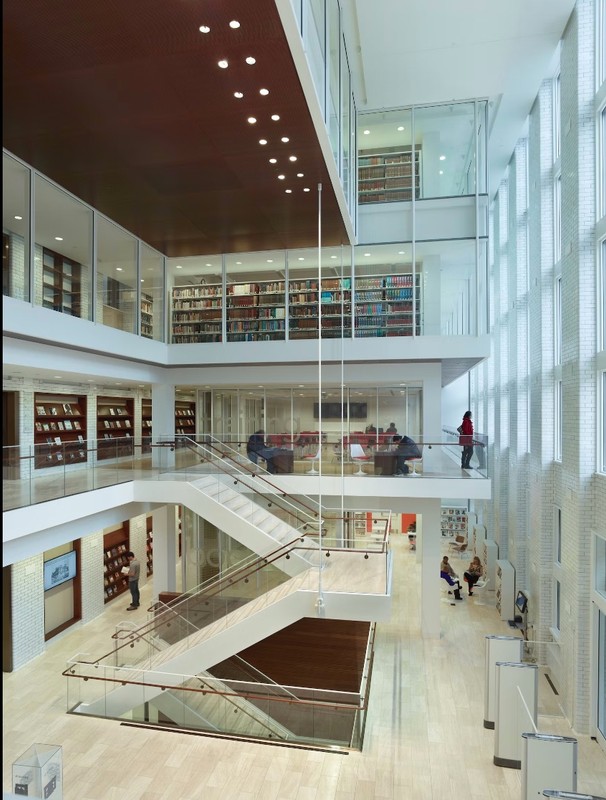
Modernist elements were incorporated with a new entrance facing Lucas Park, while the Library's original architecture was also preserved.
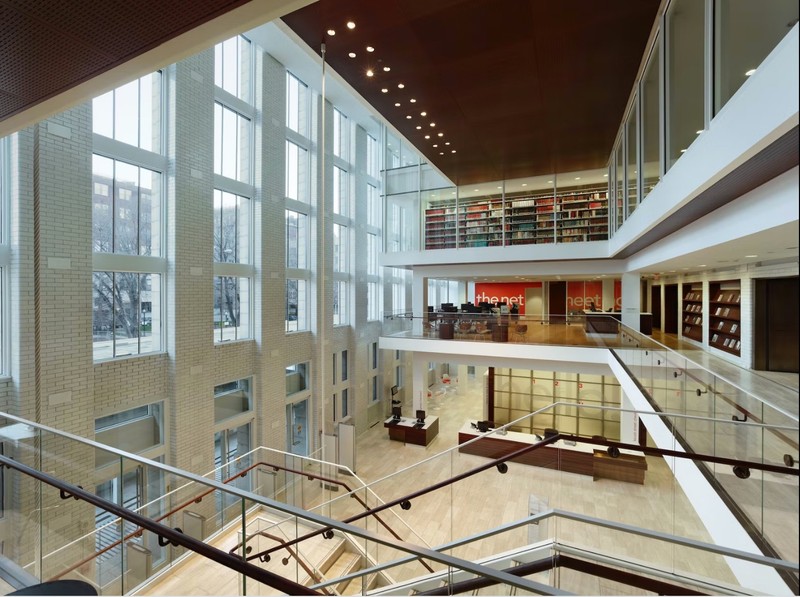
The 2010-2012 renovations included the installation of digital technologies throughout the building. The original ceiling tiles were preserved.
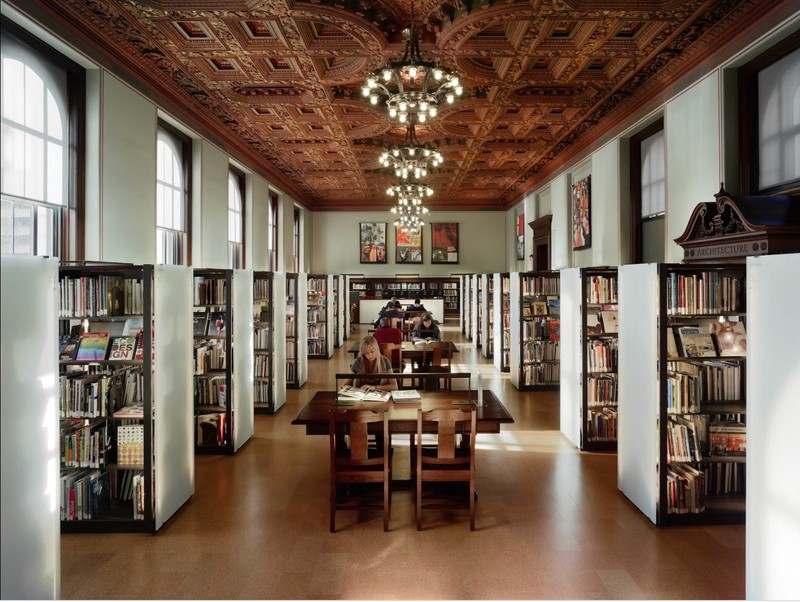
The Great Hall after renovations in 2012
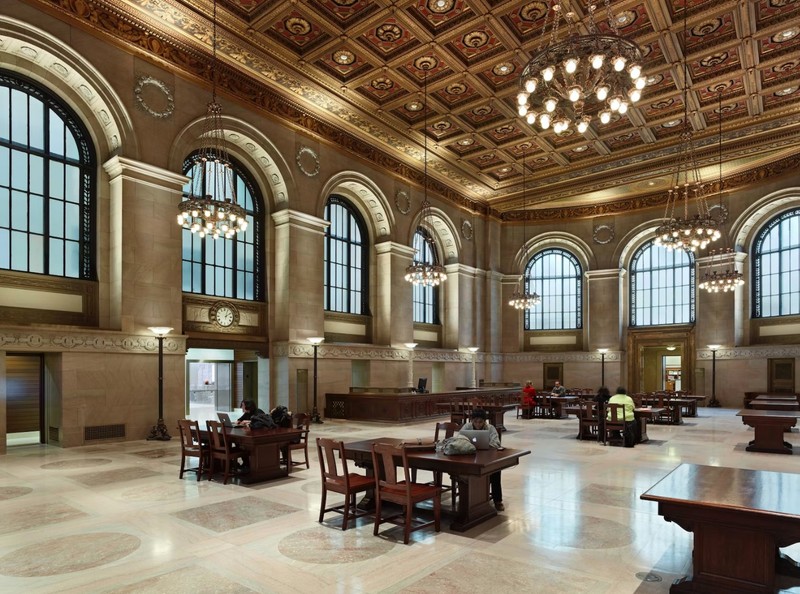
Backstory and Context
Text-to-speech Audio
In 1901, the City of St. Louis wanted a library that would rival those on the east coast. A letter was sent to the industrial tycoon and philanthropist Andrew Carnegie in New York City requesting one million dollars to fund the construction of a new library in downtown St. Louis. Carnegie sent a reply agreeing to fund the project; however, he stipulated that only half of the money could be used for a Central Library, while the rest should be used to construct branch libraries, as he believed that these were more effective in reaching the public. Partly crediting his own success in life to a private library that he visited as a boy in Pittsburgh, Pennsylvania, Carnegie sought to expand public literacy by making books more readily available to the masses, and he funded over 1,600 libraries throughout the U.S. The money that he gave to the City of St. Louis for its public library system was one of his largest donations.
In his reply letter sent on March 12, 1901, Carnegie noted that "the buildings should be dignified, but not ornate. The building is only the frame. The treasures of a Library lie within." The City accepted the money and also decided to spend an additional million dollars of its own funds, rising the total construction cost for the Central Library to $1.5 million. The result was a very grand building indeed, though it was considered relatively restrained in ornamentation compared to others of its time. The architect, Cass Gilbert, considered the library to be one of his most important commissions. His plans for a Neo-Classical, Beaux Arts building in the Italian Renaissance Revival style featured an interior oval-shaped Great Hall surrounded by four wings in a rectangle. The original blueprints, mounted on linen fabric and works-of-art in themselves, included drawings up to six feet wide, revealing the monumental scale of the building. Interestingly, Gilbert responded to a query asking when he would finish the design, and he replied by saying, "You can't draw plans for a million-dollar building in a few days. I am taking my time."
In choosing a location, the City decided to build at site of the St. Louis Exposition and Music Hall (built 1884), which was demolished in 1906 to make way for the new library. Its massive foundation had to support not only the building itself, with its granite facade and interior walls lined with marble; it also needed to support the weight of the books inside. When construction began, the workmen used cranes and other machines for heavy lifting, yet they also depended on teams of mules, often transporting materials on the animals' backs. In 1909, the building's steel frame was erected and surfaced with slabs of granite from Mt. Waldo in Maine. By 1910, craftsmen had begun creating huge plaster tiles for the interior ceiling of the Great Hall and Periodicals Room, modeled after Michelangelo's Renaissance-era design of the Laurentian Library in Florence, Italy. When the new Central Library was completed in 1912, it occupied an entire city block and was considered one of the best examples of Neo-Classical architecture in the U.S..
After receiving a City Landmark designation and serving the public for a century, the Library temporarily closed from 2010 to 2012 for a major renovation, which was completed in time for its 100th Anniversary. Cannon Design restored and modernized the library, preserving the original footprint and distinctive classical architectural features, while incorporating modernist elements. A new auditorium, meeting spaces, and research rooms were added, along with a new entrance facing Lucas Park to better connect the library with surrounding communities. New steel beams were installed, as well as updated electrical, mechanical, and environmental systems for improved energy conservation. Installing high-speed data technologies throughout the historic building meant that workers had to carefully remove and replace ceiling tiles or large slabs of stone flooring and walls. Speaking to these challenges, Cannon Design noted that: "while its grandeur is one of its great assets, historic buildings of this scale are anything but flexible." The result was an improved Central Library equipped to meet the needs of the public in the twenty-first century.
Sources
Archival Collections, St. Louis Public Library. Accessed February 10th, 2023. https://www.slpl.org/archives-collections/.
Central Library Architectural Tours, St. Louis Public Library. Accessed February 10th, 2023. https://www.slpl.org/central-library-tours/.
Central Public Library - City Landmark #19, St. Louis MO Gov. Accessed February 10th, 2023. https://www.stlouis-mo.gov/government/departments/planning/cultural-resources/city-landmarks/central-public-library.cfm.
"Central Library named among U.S. most beautiful libraries," June 13th, 2022. Accessed February 10th, 2023. https://www.slpl.org/news/central-library-named-among-u-s-most-beautiful-libraries/.
"Central Library to Close for Restoration," Wayback Machine. Accessed February 10th, 2023. https://web.archive.org/web/20110722105044/http://www.slpl.org/slpl/library/article233432419.asp.
Central Library Virtual History Tour, St. Louis Public Library. Accessed May 8, 2017. http://central.slpl.org/index.html.
St. Louis Central Library: Enhancing a library’s role as a cultural treasure, Cannon Design. Accessed February 10th, 2023. https://www.cannondesign.com/work/st-louis-public-library-transformation.
St. Louis Public Library, Central Library Renovation, Architizer. Accessed February 10th, 2023. https://architizer.com/projects/st-louis-public-library-central-library-renovation/.
Volner, Ian. "St. Louis Central Library, Designed by Cannon Design", Architect Magazine. April 1st, 2013. Accessed February 10th, 2023. https://www.architectmagazine.com/design/buildings/st-louis-central-library-designed-by-cannon-design_o.
St. Louis Public Library
St. Louis Public Library
St. Louis Public Library
St. Louis Public Library news
St. Louis Public Library
St. Louis Public Library
St. Louis Public Library
St. Louis Public Library
St. Louis Public Library
St. Louis Public Library
St. Louis Public Library
St. Louis Public Library
St. Louis Public Library
St. Louis Public Library
St. Louis Public Library
St. Louis Public Library
St. Louis Public Library
St. Louis Public Library
St. Louis Public Library
St. Louis Public Library
St. Louis Public Library
St. Louis Public Library
St. Louis Public Library
St. Louis Public Library
St. Louis Public Library
